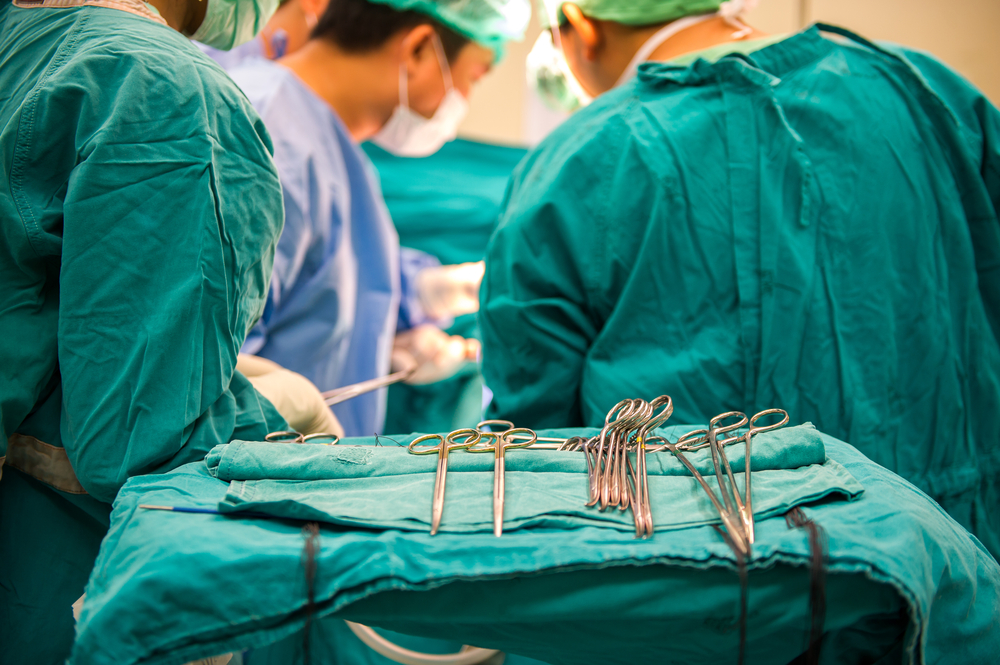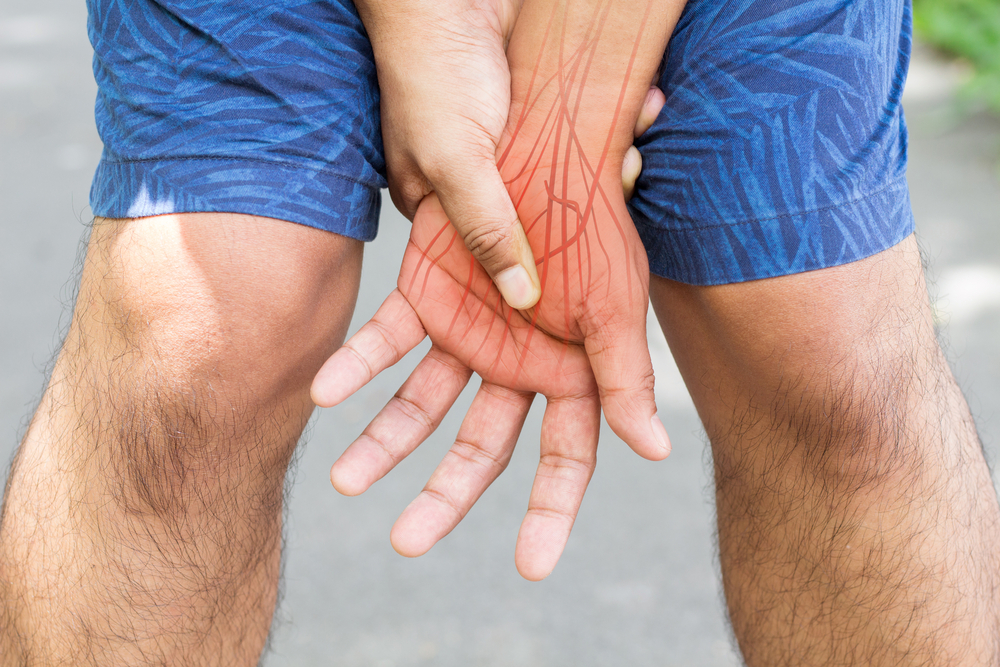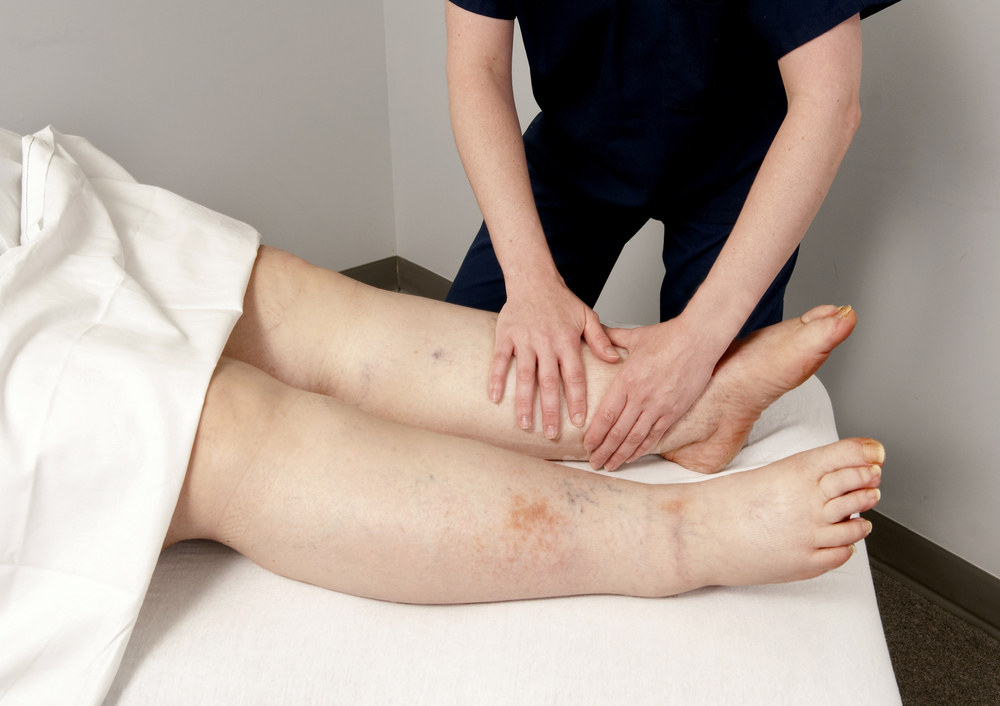- Flap surgery is fundamental to a number of reconstructive and plastic surgery procedures.
- While the list of flap surgeries is long, they all stem from the same basic principles.
- Flap surgery isn’t just for the skin; it can also be applied to the gums and eyes.
Breast reconstruction using tissue from the abdomen or back. Gum surgery to treat periodontitis. Skin from the forehead pulled down to correct damage in the nose. These procedures address wildly disparate parts of the body and different underlying concerns, but they have something in common: they’re all forms of flap surgery.
Put simply, flap surgery is when tissue from one part of the body is transferred to another, often for reconstructive purposes. Sometimes this tissue is only on the upper layers of the epidermis. At other times it involves deeper tissues, including muscle and even bone.
Flap surgery vs. skin graft
While flap surgery and skin grafting both involve the transfer of tissue from one part of the body to another, these two types of procedures are in fact quite different.
Firstly, skin grafts will never involve muscle or bone, hence the name. Another significant distinction between the two is that flaps come with an intact blood supply; in fact, most flaps remain connected to the original location (donor site), even as they are applied to a new one (recipient site).
The one exception to this rule is the free flap, or microvascular flap. These flaps, like skin grafts, are completely removed from the body before being reapplied. Using microsurgery, free flaps are meticulously reattached to the body. The veins in the flap and the veins at the recipient site are connected by the surgeon. In contrast, skin grafts are simply fixed in place, leaving the body to do the reattaching on its own.
Skin grafts and flaps are also performed for different reasons. Flaps reconstruct parts of the body, like a breast, nose, or jaw. They also repair more profound damage. Grafts meanwhile are better for widespread or extensive damage, like burns. Sometimes the two are used together, with the skin graft overlaying and helping to heal the flap donor site.
Finally, skin grafts can sometimes be useful in cases where flaps can’t be performed. Dr. Eugene Elliott, MD, FACS, a cosmetic and reconstructive surgeon with MemorialCare Orange Coast Medical Center, has experience performing several different types of flaps, including facial flaps that correct defects caused by skin cancer.
“There are certain areas of the face that aren’t amenable to flaps,” Elliot says. In these cases, skin grafts are the preferable option, even though a flap will usually heal better than a skin graft.
Flap surgery techniques
Although all flaps make use of the same fundamental principles, there are a variety of methods for performing flap surgery.
These different methods are classified according to location, tissue type, and blood supply. Only the most general types are covered below — in truth, surgeons could adapt any of these methods in a variety of ways.
Local flaps
In these cases, the recipient site and the donor site are right next to each other. The skin is freed and stretched or moved to cover the damaged area. This is best for smaller and more superficial injuries.
- Advancement flaps are rectangular portions of skin that are simply pulled forward to cover a gap.
- Rotation flaps perform a similar task but at an angle, stretching in an arc.
- Transposition flaps rotate as well, only they leave a new part of the body exposed. The skin is lifted and moved over to fill a gap, but the place it was lifted from is now in need of coverage. This can be done with a skin graft, the skin can be pulled closed, or, as in the case of a Z-plasty, it can be covered by another transposition flap.
Regional flaps
Sometimes called interpolating flaps, regional flaps are close to but not precisely adjacent to the recipient site. Instead, the flap tissue is freed and moved above or beneath healthy tissue to reach the recipient site. It remains connected to the donor site via a strip of healthy tissue called a pedicle.
It should be noted that a “pedicled flap” is not its own type of flap. Rather, it’s any flap that connects the donor and recipient sites by a pedicle, or length of tissue.
Distant flaps
Distant flaps have recipient sites and donor sites that are not close by. This is done when the only suitable tissue is far away.
- Tubed flaps are much like regional flaps, only they cover a far greater distance. The flap remains connected to the donor site by a long pedicle.
- Direct flaps involve bringing the distant sites together. Groin flaps for repairing the hand fall under this category. Instead of having a pedicle reach all the way from the groin to the hand, the hand is brought to the groin and fixed by it while the flap heals.
- Free flaps, as mentioned above, are completely severed from the donor site and the vascular system is reattached at the recipient site.
Flaps by tissue type
Flaps can include one or more types of tissue. In some cases, more surface tissues, like skin and fascia, are bypassed to reach deeper tissues, like muscle and bone. The combinations are extremely varied. These are only some of the more common classifications:
- Cutaneous flaps contain the skin and the superficial fascia, fatty tissue just beneath the skin. They are the most superficial of all the flap types.
- Fasciocutaneous flaps contain all of the above plus the deep fascia, deeper connective fatty tissue that lies just above the muscle.
- Muscle flaps contain just muscle. Procedures involving muscle flaps are sometimes accompanied by a skin graft to cover the exposed muscle tissue in the new location. Muscle grafts are often used to provide volume or bulk for reconstructive purposes.
- Musculocutaneous flaps include all of the above — skin, subcutaneous tissue (superficial and deep fascia), and muscle. These fill very deep defects and also provide bulk for reconstructive purposes.
- Osseous flaps, otherwise known as bone flaps, are simply portions of bone removed from one area to reconstruct another. For example, a bone in the leg may be used to help reconstruct the jaw.
- Osteocutaneous flaps contain bone and tissue and are used for largely the same purpose as bone flaps.
Flaps by blood supply
Axial flaps and random flaps are characterized by their connection to the patient’s vascular system.
- Axial flaps are connected to the body’s vascular system via a named vein or artery. In other words, the blood supply is significant. These are more common with distant pedicled flaps, which require a more significant blood supply.
- Random flaps are connected to the vascular system using standard, unnamed networks. These are more common with smaller, adjacent flaps that require a less significant blood supply.
Applications of flap surgery
Flap surgery takes on many forms, with new innovations emerging practically every day. In order to help put this complex type of procedure into perspective, the following section covers some of the more common or unique applications of flap surgery, organized by the parts of the body that they address.
Gingival flap surgery
Also known as gum flap surgery or periodontal flap surgery, this procedure is used to treat gum disease (periodontitis). It involves peeling the gum back to remove infected tissue and then replacing the healthy gum tissue.
Pharyngeal flap surgery
This form of flap surgery is most commonly done on children between the ages of four and six. It involves taking a muscle flap from the back of the throat and transferring it to the pharynx in order to correct speech problems caused by too much air escaping through the nose.
Conjunctival flap surgery
Conjunctival flap surgery is used to treat corneal diseases. During this procedure, the surgeon moves healthy portions of conjunctiva, the membrane that lines the eye and eyelids, to cover defects in the conjunctiva.
Musculocutaneous breast flaps
More traditional forms of breast reconstruction flap surgery involve using muscle as well as tissue in re-forming the breast to add bulk.
- TRAM flap surgery is performed by taking tissue and muscle from the transverse rectus abdominis muscle (TRAM) in the abdomen and applied to the chest. This can be done either as a free flap or with a pedicle.
- Latissimus dorsi flap surgery is done with tissue taken from the latissimus dorsi muscle in the back. This surgery is typically used for smaller reconstructions than the TRAM flap as there is less tissue to work with.
- Inner thigh flap surgery, also called the transverse upper gracilis (TUG) flap, is a newer procedure that uses tissue, including muscle, from the lower buttocks and inner thigh.
Perforator flaps
Dr. Constance Chen, MD, FACS, a New York plastic surgeon with experience performing a wide variety of flap surgeries, doubts the suitability of latissimus dorsi flaps and the aforementioned TRAM flaps.
Although she used to perform them both, she has since stopped, asserting that “it doesn’t make sense to sacrifice muscle to reconstruct the breast.” Dr. Chen expands on this, noting that “There is a principle in plastic surgery that the best type of reconstruction replaces like with like.”
Since a mastectomy specimen does not include muscle, Dr Chen questions why muscle should be used to recreate it.
Dr. Chen is credited with pioneering perforator flap surgeries for breast reconstruction, none of which use muscle for reconstructive purposes.
- Deep inferior epigastric perforator (DIEP) flap surgery works similarly to the TRAM flap, minus the muscle.
- Superior gluteal artery perforator (SGAP) flap surgery is ideal for women who lack sufficient tissue in their backs or abdomen for one of the other options. A free flap is taken from the buttocks and applied to the chest.
- Profunda artery perforator (PAP) flap surgery is similar to the inner thigh flap, but without the muscle.
- Thoracodorsal artery perforator (TDAP) flap surgery uses tissue taken from the patient’s side at about breast height.
Facial wounds
Flaps are a popular choice for correcting defects in the face. For example, forehead flaps are commonly used to repair noses. The flap is taken from just above the nose, rotated ninety degrees, and fixed on top of the defect.
Cheeks are also a popular source for facial tissue when it comes to correcting deep damage in the face and head.
Hair flap surgery
If you’re researching flap surgery, then you may have come across the term “hair flap.” This controversial flap surgery is purely cosmetic. It involves cutting away balding spots on the head and and rotating them to the forehead.
The donor area is closed, bringing together portions of scalp that still grow hair. This procedure is now rarely performed due to the availability of less invasive (but still effective) treatments.
Z-plasty
A Z-plasty is a common type of transitional flap that involves two flaps, each one made and moved to cover the newly exposed area created by the other flap. The end result creates a “Z” shape. It’s primarily used to treat unsightly or painful scars and can be applied to just about any part of the body, including the face and hands. Longer scars may require more than two transitional flaps.
This is only a sampling of what flap surgery can accomplish. Skin flaps of varying distances and depths can be applied to correct a wide variety of wounds, including those caused by skin cancer or trauma.
Risks and recovery
It’s difficult to go into too much detail regarding risks and recovery. After all, a gingival flap and a forehead flap are two entirely different surgeries, to give just one example. Nonetheless, there are a few things any flap surgery patient should be aware of before committing to a procedure.
Patient factors that affect flaps
Some patients just aren’t good candidates for flap surgery. “Any surgical patient has to be carefully screened,” says Dr. Elliot.
Patients with poor overall health will not heal as well, and the ability to heal can spell the difference between surgery success and surgery failure.
Smoking in particular is a dealbreaker. Dr. Elliot asks patients to quit smoking two to three months before surgery and follows up with blood tests to confirm that they actually have. “Nicotine as a drug constricts blood vessels,” he says of the impact of smoking on flap necrosis. “When the blood vessels constrict, there’s less blood flow all over the body.” Healthy blood flow is essential to the success of flap surgery.
Flap necrosis
Ischemia, or limited blood flow, can lead to necrosis. In other words, if your flap isn’t getting enough oxygen, it could die. This could be the result of smoking, but it could also be the result of poor health overall. It could also be the result of poor flap design or a hematoma (blood clot) after surgery.
Fortunately, if a flap becomes necrotic, it is possible to salvage it. “There are topical medications you can put on flaps that dilate vessels,” says Dr. Elliott. He also mentions putting patients in hyperbaric chambers to improve blood flow to the flap. Necrosis can progress past the point of no return, however, requiring a new surgery to remove the dead tissue and repair the damage.
It’s therefore important to catch necrosis early. Signs that a flap isn’t getting enough blood include paleness or blueness. The flap may also feel cool to the touch. Of course, if the necrosis is caused by a hematoma, then the opposite may be true. There may be too much blood building up in the flap. In either case, as necrosis sets in, there may be drainage from the incision site and the skin will eventually turn black.
Infections and poor healing
As with any surgery, there’s also a risk of infection. Signs include inflammation, skin that’s warm to the touch, discharge (pus), and fever. There’s also the potential for wound separation, unsightly scarring, and numbness.
General tips for flap surgery recovery
The best thing you can do after getting flap surgery is rest. How long you need to rest depends on the extent and location of the surgery. Whatever the case, expect your body to be healing for a while. According to Dr. Chen, for a healthy patient wounds will reach maximal wound healing at around 6–8 weeks.
The next best thing you can do is avoid interfering with the donor and recipient sites. Keep your bandages clean and dry. Don’t scratch the sites and don’t apply any creams or change the bandages without direct instructions from your surgeon to do so.
Finally, keep an eye out for signs of infection and necrosis. Catching both of these early will help the overall outlook of the surgery.
Flap surgery is fundamental
Although this procedure may sound new to you, it’s really a fundamental part of plastic and reconstructive surgery.
“A lot of plastic surgeons will still do reconstructive work as well as their cosmetic work,” says Dr. Elliott. “And even when we do cosmetic work, we’re still thinking about flaps.” He goes on to note the similarities between flap surgery and procedures like face and breast lifts, concluding that finding a qualified surgeon, such as a board-certified plastic surgeon, is the first step in having successful flap surgery.
» Use Zwivel’s directory to locate and contact board-certified reconstructive plastic surgeons in your area.









